Chapati, or ‘roti’ as fondly called by many, has graced my kitchen table more times than I can count, becoming a sort of culinary confidant. It’s a simple unleavened flatbread made with just whole wheat flour, water, and a touch of salt, but its magic lies in how it harmoniously accompanies a myriad of dishes, from the hearty dal to the rich paneer butter masala. It cradles the flavors, each bite taking you closer to understanding the soul of Indian home-cooking.
The charm of making chapati, for me, started as a way to reconnect with my roots and honor the traditions passed down through generations. I embraced the rolling pin and the tawa (the skillet used to cook chapatis) with the intent of creating something that transcends mere sustenance. It was about heritage, health, and the act of creating something with intention and love. From the first handful of flour to the last roll of the pin, each chapati is a canvas of my feelings—sometimes round, sometimes not, but always made with a warm heart.
In this blog post, I intend to share with you not just a recipe, but an endeavor in understated elegance. Why settle for store-bought when with a few simple strokes of the rolling pin, your kitchen can be filled with the delectable aroma of your own homemade chapatis? So, roll up your sleeves, and let’s sprinkle a little joy with some flour as we embark on this flavourful venture together.
Chapati Recipe
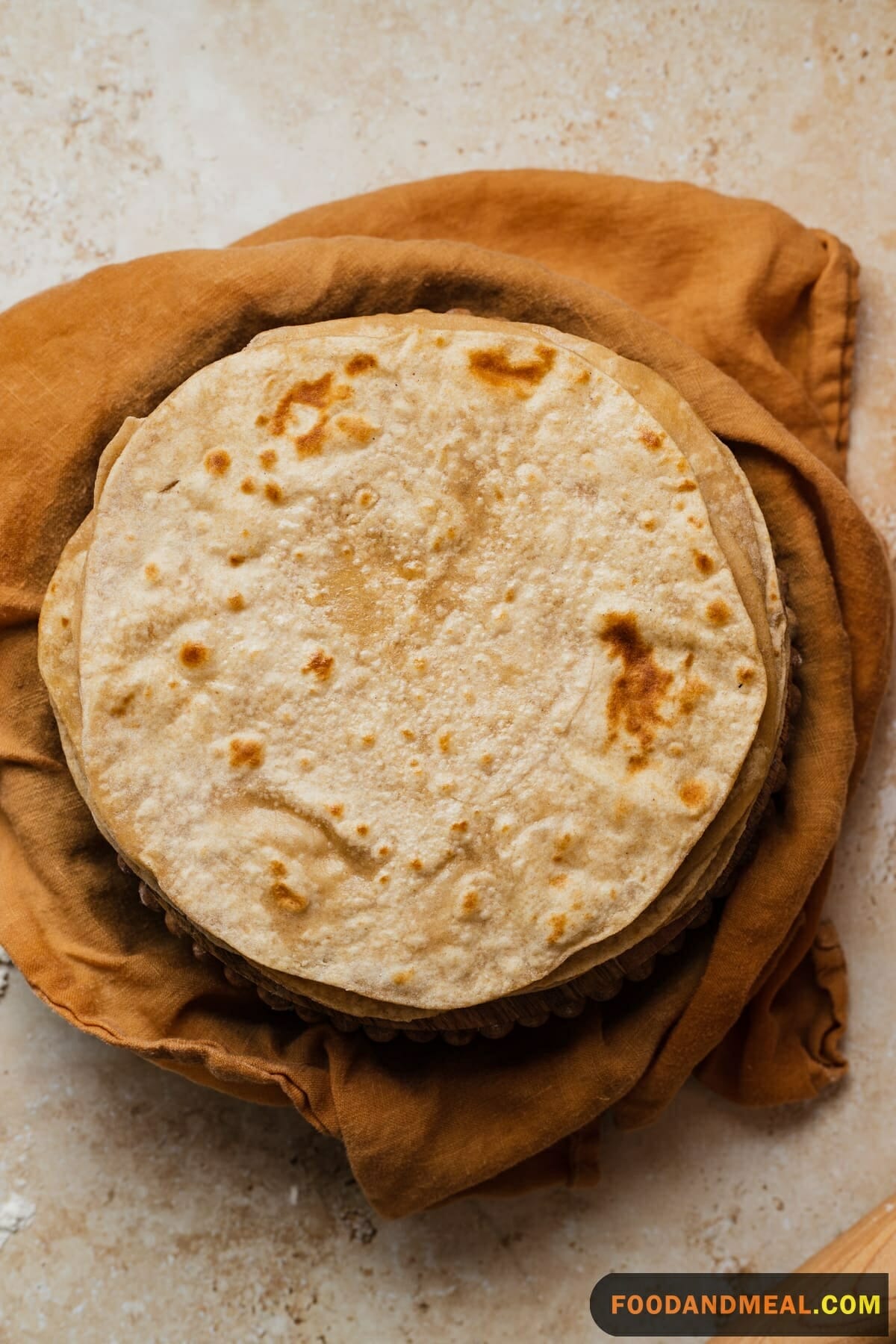

East African Chapati
Ingredients
- ½ cup cooking oil
- All-purpose flour (7 cups: 2 cups for kneading and the rest for cooking)
- salt
- 2 cups warm water
Instructions
COOKING
- Measure 5 cups of flour in a large bowl.
- In another bowl, combine the salt, 3 tablespoons of oil, and 1½ cups of water and stir until the salt dissolves.
- Pour the mixture into the bowl of flour. Mix well, and add the remaining water until the dough softens.
- Knead the dough for 10-15 minutes. Add flour if necessary.
- Divide into 11-15 equal parts (spherical shape), place it on a flat surface, and cover with a plastic sheet or clean white cloth.
- Remove the ball and place it on a flat surface lightly sprinkled with flour. Sprinkle the rolling pin with the flour to keep it from sticking to the dough.
- Roll out the dough with a rolling pin thinner than ¼ of a centimeter (it's fine if it's not perfectly round).
- Brush the oil over it.
- Make an inch crease on the side facing you, then roll forward with both hands.
- Do just four. Roll the rest while cooking.
- Heat a non-stick skillet over medium heat (use a round skillet). Sprinkle with a few drops of water after heating. If the drops dry immediately, the pan is ready.
- Place the freshly rolled chapati on the heated pan. After about a minute, check the bottom of the chapati, if it is golden brown and the top is translucent, turn it upside down.
- Spread a little oil on it and check that the bottom is cooked and golden brown.
- If so, turn the loaf over again, brush the oil on the second side of the loaf and turn it over again.
- After about 30 seconds, remove the chapati from the pan, place it on a plate, and cover with aluminum foil.
Notes
Nutrition
© Food And Meal
This website provides approximate nutrition information for convenience and as a courtesy only. Nutrition data is gathered primarily from the Spoonacular Database, whenever available, or otherwise other online calculators.
Alternative Method: Making Chapati in an Air Fryer
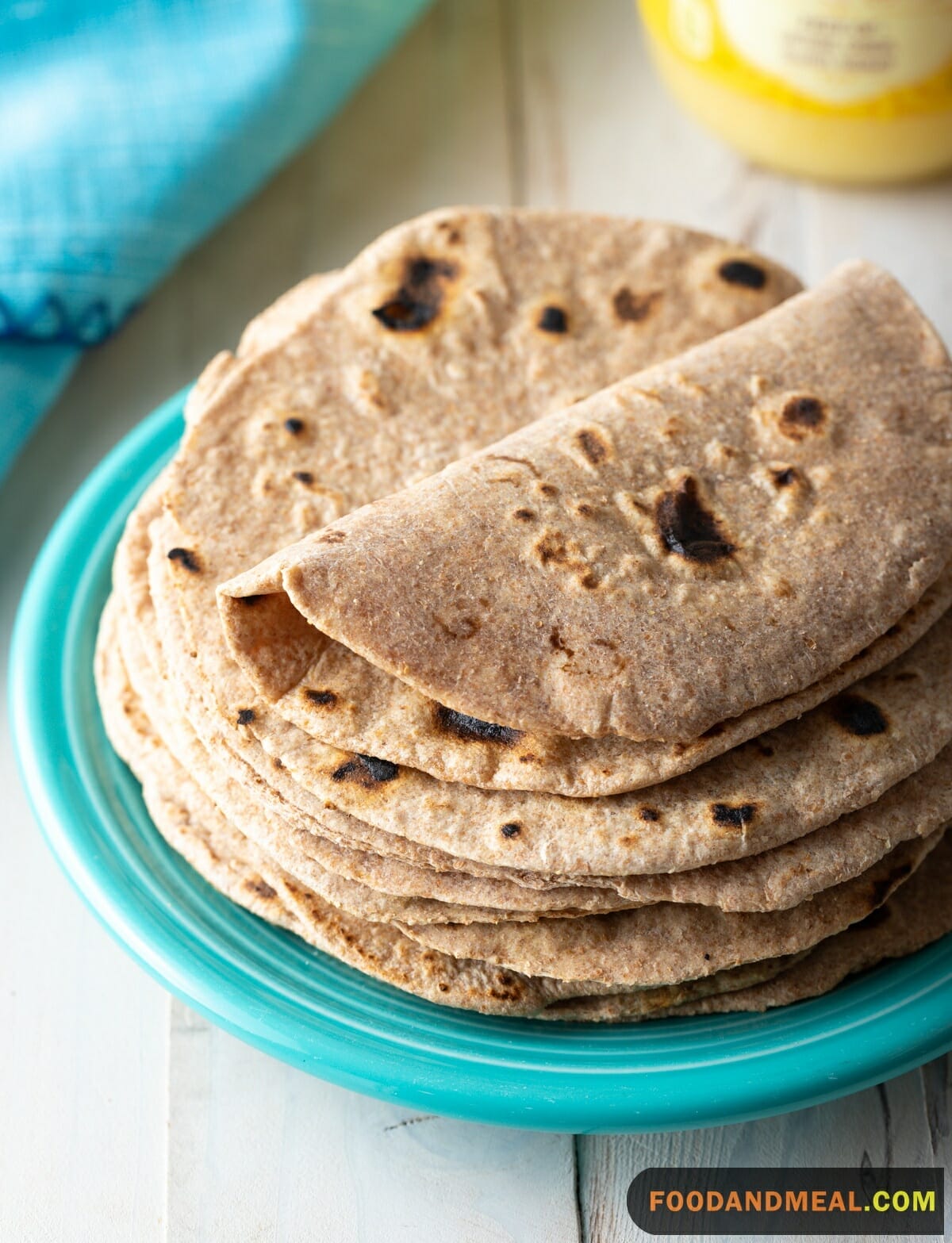
To prepare delicious Chapati using an air fryer, start by combining whole wheat flour and salt in a mixing bowl. Mix well and gradually add warm water, kneading the dough until it becomes smooth, pliable, and not sticky. Adjust the flour or water if necessary to achieve the desired consistency. Divide the dough into small, equal-sized portions and roll them into balls for easier rolling later. Preheat the air fryer to 375°F (190°C) for approximately 5 minutes. While it preheats, take a dough ball and roll it into a thin, round Chapati on a lightly floured surface, slightly smaller than the air fryer basket’s diameter. Brush one side with a thin layer of vegetable oil or ghee. Place the Chapati, oil/ghee side down, in the preheated air fryer basket. Cook for 2-3 minutes until it puffs up and turns golden brown, ensuring not to overcook. Flip the Chapati and cook for another 1-2 minutes until the other side is golden brown and crisp. Once done, remove the Chapati from the air fryer, and it’s ready to serve. Repeat the process for the remaining dough balls, and enjoy your freshly cooked Chapati.
Tips for making Chapati
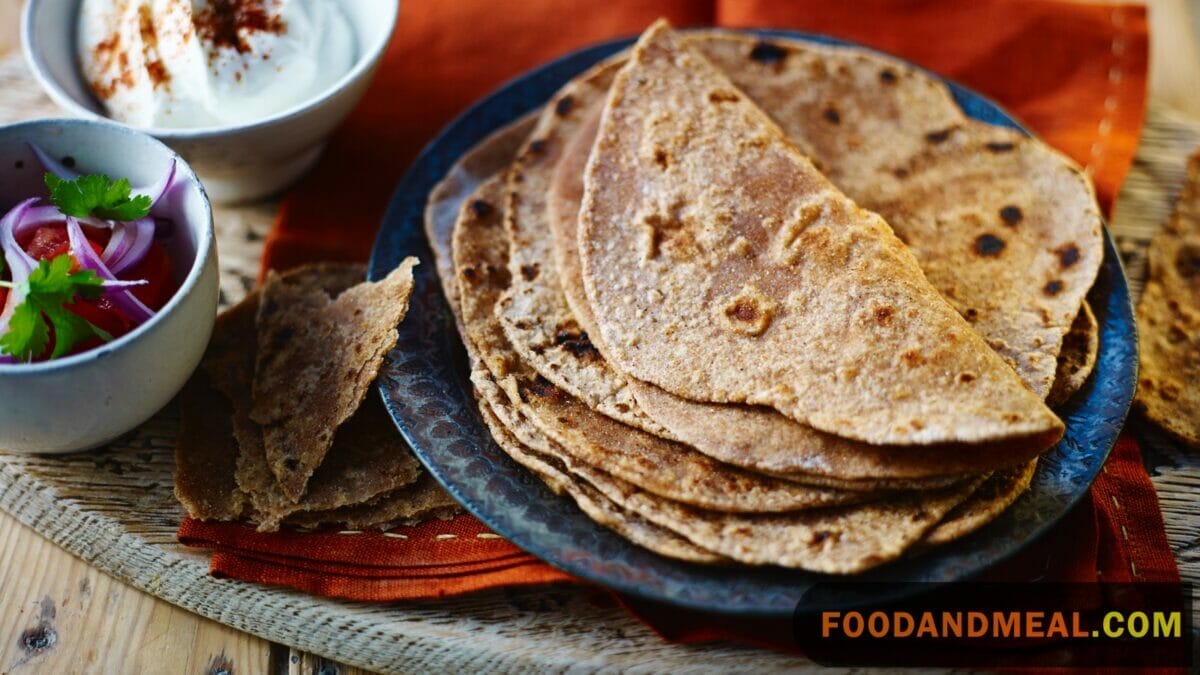
Serving Suggestions
Firstly, chapati with Natto could provide a contrast in texture with the softness of the bread balancing the sticky, stringy texture of the fermented soybeans. It can be served as an open-faced snack topped with Natto and chopped green onions, providing a healthful, protein-rich dish.
Accompanying chapati with Gyoza, the Japanese dumplings, can create a hearty meal. The chapati can be used to scoop up the Gyoza or it can be cut into quarters and used as a base onto which the dumplings can be placed, the slight chewiness of the bread complementing the tender filling and crispy exterior of the Gyoza.
Serving chapati alongside Wasabi offers an interesting possibility. The chapati can be used as a base for innovative sushi-style rolls; fillings such as sashimi, rice, and cucumber can be wrapped in a chapati with a dab of wasabi to add a sharp, pungent kick to each bite.
Chapati served with Karaage, the Japanese fried chicken, is a comforting combination. The chapati can be used as a wrap for the chicken, with some fresh lettuce and a drizzle of lemon juice or mayonnaise to bring a tangy creaminess to the dish.
Pairing chapati with Miso Soup offers a soothing and warming meal. Diners can dip the chapati into the miso soup, where it can absorb the flavorful broth, becoming soft and flavorful itself. Additions of tofu or seaweed from the soup can also be placed on top of a piece of chapati for a deconstructed miso sandwich of sorts.
For a more substantial meal, chapatis can be served alongside Katsudon. The bread can be used to scoop up portions of the rice, egg, and breaded pork cutlet mixture, providing a diverse array of textures and flavors from the creamy egg, the crisp pork, and the soft rice.
Chapati with Oyakodon presents another filling meal where the bread can play a similar role as with Katsudon, allowing for a combination of textures and flavors, with the gently cooked chicken and egg adding a savory element.
In pairing with Yakisoba, chapatis can be served on the side to complement the noodles. The chapati can be used to scoop up the fried noodles and vegetables, or alternatively, the Yakisoba can be served on top of the chapati for a fusion twist, almost like an open-faced sandwich.
For a lighter option, chapati can be served with a side of Daikon Salad. The sharpness and crunch of the daikon would complement the softness of the chapati, and a piece of chapati can be used to scoop up the salad for a refreshing bite.
Finally, serving chapati with Kimchi Stew allows for a rich and flavorful experience; pieces of the chapati can be used to dip into the stew, soaking up the spicy and tangy flavors while providing a neutral balance to the robustness of the stewed ingredients.
Cooking Tips
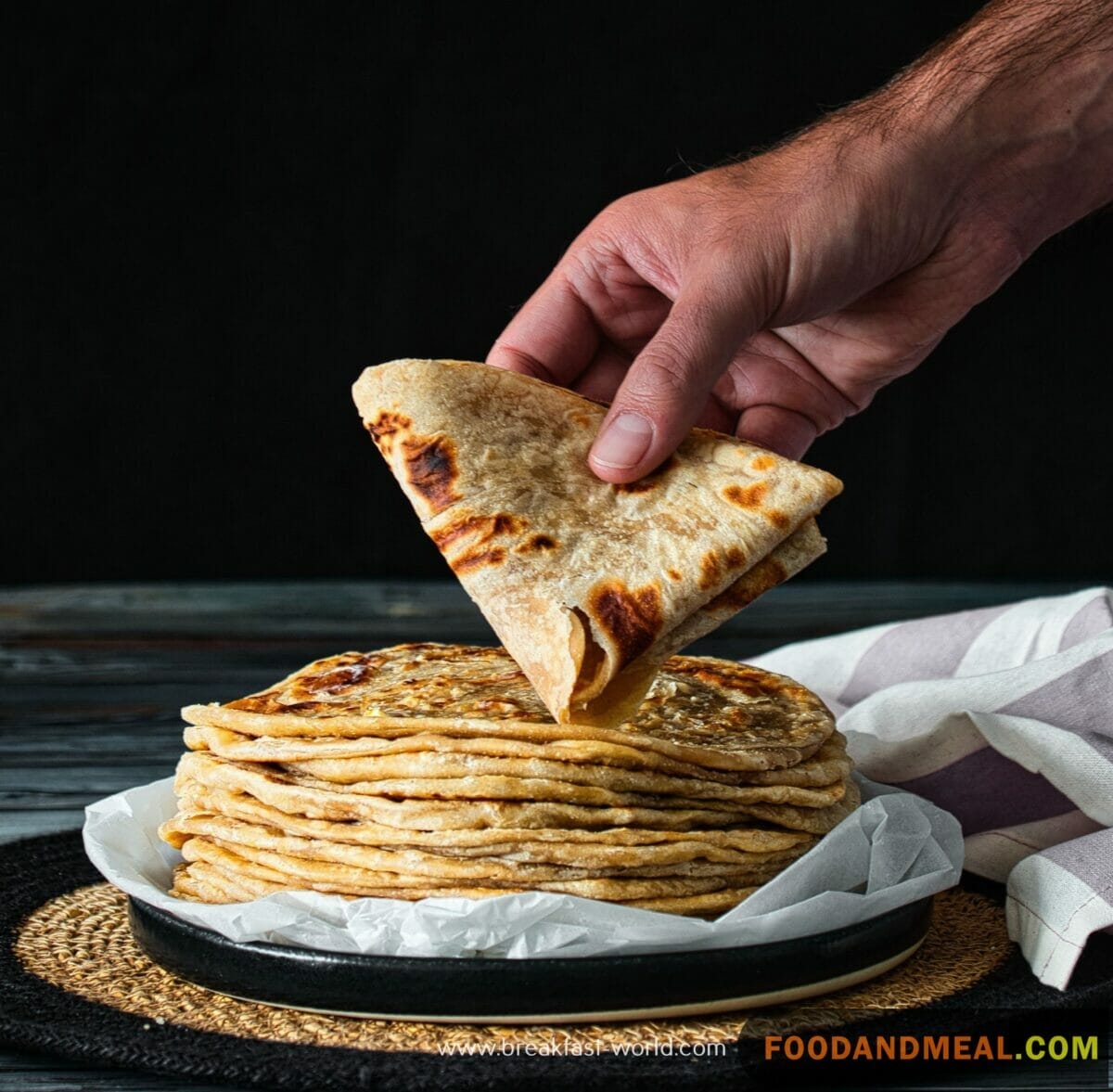
To prepare delicious Chapati using an air fryer, start by combining whole wheat flour and salt in a mixing bowl. Mix well and gradually add warm water, kneading the dough until it becomes smooth, pliable, and not sticky. Adjust the flour or water if necessary to achieve the desired consistency. Divide the dough into small, equal-sized portions and roll them into balls for easier rolling later. Preheat the air fryer to 375°F (190°C) for approximately 5 minutes. While it preheats, take a dough ball and roll it into a thin, round Chapati on a lightly floured surface, slightly smaller than the air fryer basket’s diameter. Brush one side with a thin layer of vegetable oil or ghee. Place the Chapati, oil/ghee side down, in the preheated air fryer basket. Cook for 2-3 minutes until it puffs up and turns golden brown, ensuring not to overcook. Flip the Chapati and cook for another 1-2 minutes until the other side is golden brown and crisp. Once done, remove the Chapati from the air fryer, and it’s ready to serve. Repeat the process for the remaining dough balls, and enjoy your freshly cooked Chapati.
FAQs about Chapati
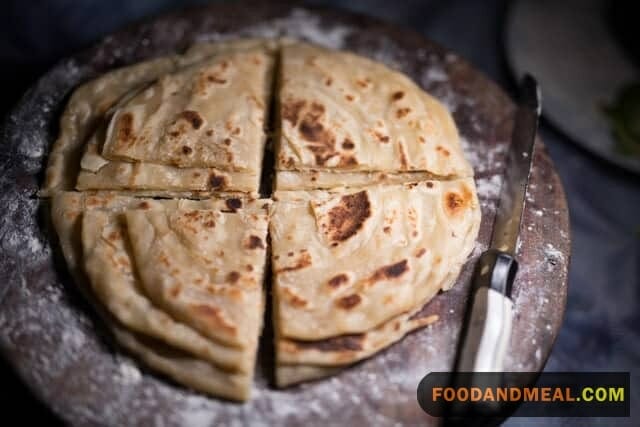
- Can I store leftover Chapati, and how should I do it? Yes, you can store leftover Chapati in an airtight container at room temperature for up to 2 days. For longer storage, keep them in the refrigerator for about a week. Reheat in a dry skillet or microwave to regain their softness.
- Why is my Chapati not puffing up? Chapati puffing depends on various factors, including dough consistency, rolling thickness, and cooking temperature. Practice and experimenting with these factors will help you achieve better puffing.
- Can I make Chapati with other flours? While traditional Chapati is made with whole wheat flour (atta), you can experiment with other flours like millet, barley, or even gluten-free options. Keep in mind that the texture and flavor may vary with different flours.
- Can I freeze Chapati for longer storage? Yes, you can freeze Chapati. Place parchment paper between each flatbread to prevent sticking, and store them in an airtight container or freezer bag. They can be frozen for up to 6 months. Thaw and reheat as needed.
- How do I reheat Chapati to maintain their softness? To reheat Chapati, use a dry skillet or tava on medium heat. Heat each side for about 10-15 seconds until warm. Alternatively, use a microwave, cover them with a damp cloth, and heat for 15-20 seconds.
Conclusion
Chapati, a staple in many diets, embodies simplicity and nourishment. Its origins trace back to the Indian subcontinent where it emerged not only as a food item but as a symbol of heritage. The unassuming flatbread, made from just whole wheat flour and water, has journeyed through time to become a ubiquitous part of meals in many parts of the world. The nutritional profile of chapati is commendable, since its whole grain composition offers dietary fiber, minerals, and vitamins, contributing to a balanced diet. Additionally, its low sodium and fat content make it a heart-healthy option that can be enjoyed by individuals mindful of cardiovascular health.
As a canvas for culinary creativity, chapati seamlessly adapts to various flavor profiles, from the pungent and aromatic spices of traditional Indian cuisine to more contemporary fusion interpretations. Food enthusiasts and chefs alike explore the versatility of chapati, incorporating it in unconventional settings, showcasing its potential far beyond the traditional curry accompaniment.
For those wishing to delve deeper into the culinary world of chapati, websites like Food And Meal or foodandmeal.com offer a treasure trove of information, recipes, and cooking tips that invite novices and seasoned cooks to explore the diverse applications of this beloved flatbread. The digital realm provides a communal table of sorts, where food lovers can share stories, elevate their cooking skills, and keep the tradition of chapati-making alive across generations.




